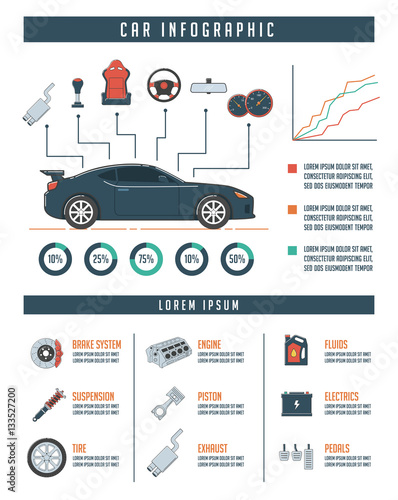But What Should You Do About Squishy Brake Pedals? Discover The Solution Listed Below!
But What Should You Do About Squishy Brake Pedals? Discover The Solution Listed Below!
Blog Article
Team Writer-Maddox Dean
When it comes to your car's brake system, understanding usual issues can save you from possible safety and security hazards. From identifying brake pad wear to addressing brake liquid leakages, knowing exactly how to take on these problems is important. But what concerning those squishy brake pedals? There's a repair for that also. Remain tuned to find out more regarding these concerns and the functional remedies that can keep you securely when driving.
Brake Pad Put On and Replacement
When it pertains to keeping your car's brake system, one vital element to watch on is the wear and replacement of brake pads. Brake pads are important parts that push against the brake rotors to reduce or stop your car. Gradually, these pads wear down due to friction, needing routine examination and replacement to guarantee your brakes work effectively.
To figure out if your brake pads require replacement, pay attention for shrilling or grinding sounds when you apply the brakes. In mobile auto repair , if your car takes longer to stop or you observe resonances or pulsations when braking, it may be time to replace the brake pads.
Disregarding used brake pads can lead to reduced braking efficiency, damage to various other brake elements, or perhaps brake failing.
Replacing brake pads is a fairly straightforward process for many automobiles. Nonetheless, if you're uncertain or awkward doing this task, it's ideal to speak with an expert mechanic to ensure correct installation and ideal brake efficiency.
Regularly checking and replacing brake pads is essential for your safety and security and the longevity of your lorry's braking system.
Brake Liquid Leaks and Maintenance
To ensure your automobile's brake system works optimally, it is very important to also take notice of brake liquid leaks and upkeep. https://brakecheck73950.ttblogs.com/9914373/discover-the-essential-elements-to-consider-when-choosing-between-diy-cars-and-truck-fixings-or-working-with-an-expert-by-reading-this-practical-overview is critical for transferring the force from your foot on the brake pedal to the real braking system. One common concern with brake liquid is leaks, which can occur as a result of deteriorated brake lines, seals, or connections. If you observe a puddle or leaks under your cars and truck, it's important to attend to the leak promptly to stop a potential brake failure.
Routinely checking your brake liquid degree is vital to preserving your brake system. Reduced brake fluid can result in air getting in the brake lines, which jeopardizes stopping efficiency.
Additionally, old or polluted brake liquid can influence the overall effectiveness of your brakes. It's advised to adhere to the supplier's standards on when to alter the brake fluid, generally every 2 years.
Spongy Brake Pedal: Blood Loss Brakes
If you have actually ever before experienced a squishy brake pedal while driving, you understand the importance of maintaining a firm and responsive braking system. One typical source of a spongy brake pedal is air trapped in the brake lines. When air enters the brake system, it can result in a loss of hydraulic stress, resulting in that distressing spongy feeling when you push the brake pedal.
To settle this problem, bleeding the brakes is essential. Bleeding the brakes involves eliminating the air from the brake lines to recover proper hydraulic stress.
To hemorrhage the brakes, you'll need a helper to help you. Begin by locating the brake bleeder valve on each wheel, commonly discovered near the brake caliper. With a wrench, loosen the valve and have your assistant press the brake pedal while you observe any air bubbles appearing. Repeat this process for every wheel, beginning with the wheel farthest from the master cylinder and moving better.
Once you no longer see air bubbles and only clear fluid emerges, tighten the valve and top up the brake liquid storage tank as required. Hemorrhaging the brakes helps make sure a company brake pedal and improves general stopping performance.
Conclusion
Since you comprehend common brake problems and how to repair them, you can guarantee your vehicle's safety and performance. Remember to pay attention for indication like screeching noises or mushy brake pedals, and address them without delay. Routine maintenance and prompt substitutes are crucial to maintaining your brakes in top problem. Remain positive and attentive to your brake system to enjoy secure and trustworthy driving experiences.
